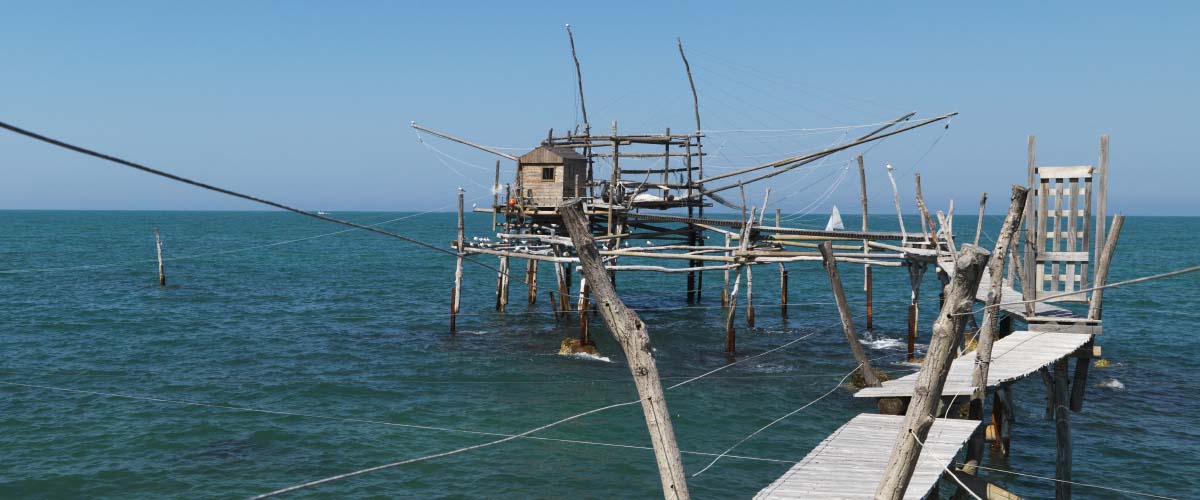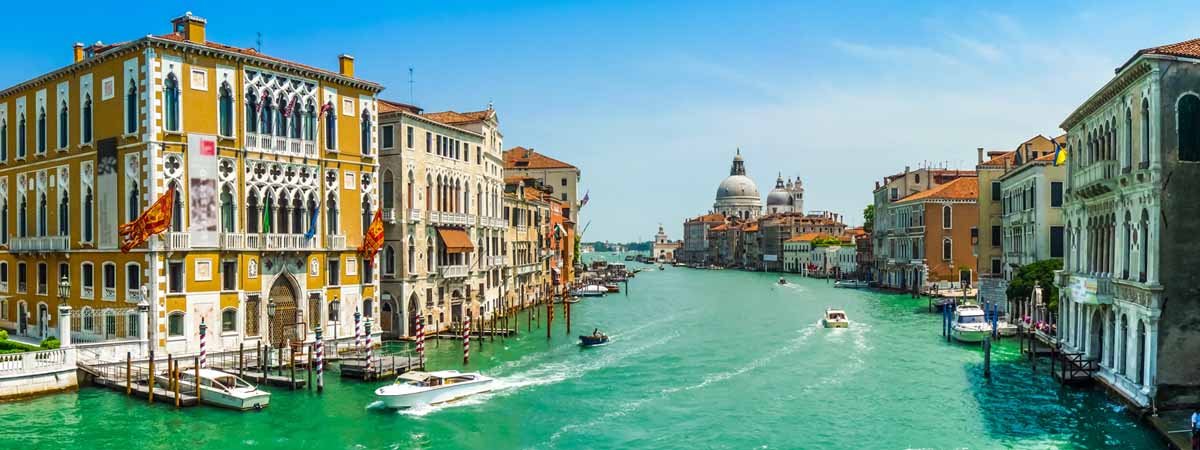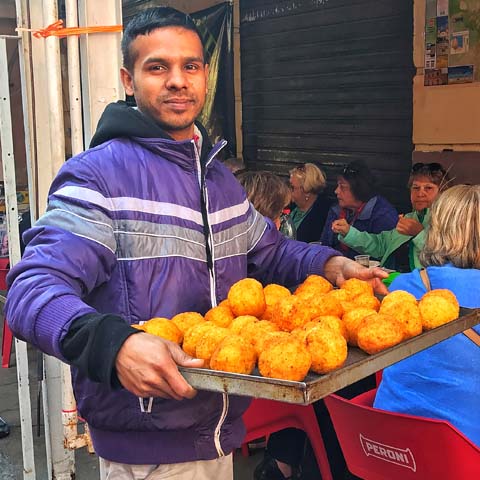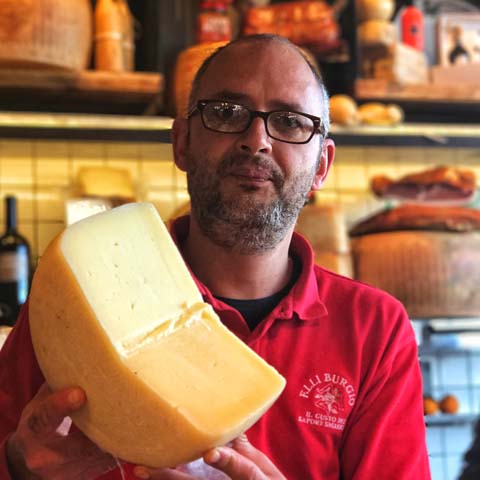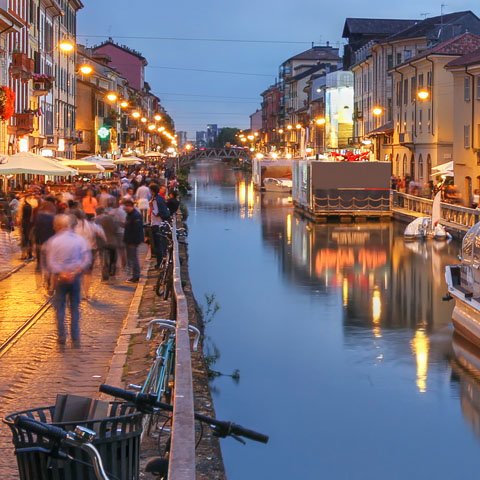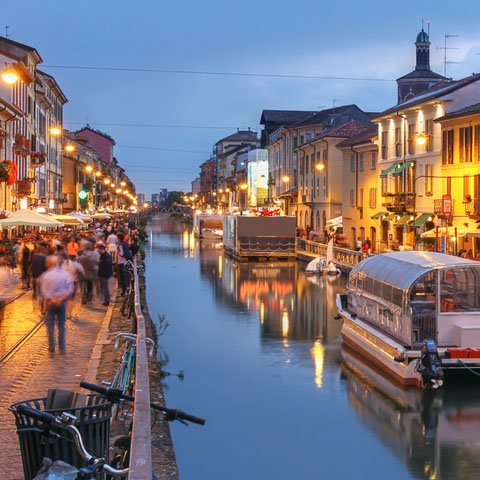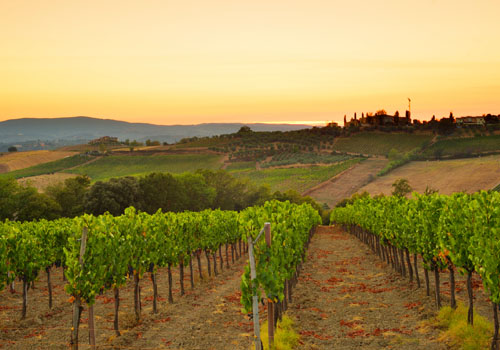For Italians, their passion for food comes in second only to their love of family. Throughout Italy, food and wine serve as a testament to each region’s unique cultures and a reflection of the deep, familial history that runs through the country.
Each region within Italy–Tuscany, Piedmont, Sicily, and beyond–has its own characteristics and flavor profiles, setting the regional cuisines apart from one another. Unifying these varied cuisines is the simplistic, farm-to-table style preparation that makes Italian food so irresistible. Chefs and locals alike prioritize cooking with what is available based on the season’s bountiful crops and nearby resources. Towns in the fertile countryside utilize earthy mushrooms and truffles, while coastal cities focus their menus on the abundant fresh seafood available from the sea.
Perhaps even more reflective of the Italian style of cuisine than the use of local ingredients is the practice of cooking traditional family recipes. Nearly every family in Italy has well-loved and cherished family recipes that have been preserved and passed down by the nonnas, or grandmothers, of the families. No matter where one finds themselves dining while on an Italian vacation, the meal will surely be an expression of the chef’s family history.
Throughout Italy mealtime is considered a special occasion. At the dinner table, conversation flows as abundantly as the decadent wines, and families and guests connect with one another on a personal, meaningful level. As a form of respect to the food on the table, those who so thoughtfully prepared the meal, and the company with which one is dining, diners in Italy take the time to truly savor the food in front of them and honor the cherished experience of mealtime with friends and family.
All throughout Italy, appetizers are an important warm-up to the main courses of a meal. Whether meals are comprised of seafood or meat, appetizers help diners to establish their palate for the dishes to come and introduce the style of cuisine to be served.
For dishes made of seafood, traditional appetizers are delicate fish and other types of light seafood, such as octopus and cod, alongside a glass of chilled white wine. For meat-based dishes, antipasto platters of cured meats, local vegetables, cheeses, and olives are typically served. Common throughout the entire country, cured meat trays vary from region to region and typically contain whatever meat is readily available for the location and season.
While not necessarily an appetizer, bread is an important aspect of Italian cuisine, as it is served alongside every meal. For decades, bread has been considered as the foundation of Italian cuisine, particularly in central Italy. Locals typically pick up fresh bread from their neighborhood bakery daily, and it is key to the unwritten tradition of scarpetta, the practice of using a slice of bread to clean the dinner plate from sauces and drippings. Another way of respecting the food, this tradition is derived from the peasant culture, and reflects the Italian ideal of not leaving leftovers.
With more than one hundred different types of pasta available throughout the many regions of the country, Italy’s love and passion for pasta is clear, making it no wonder that pasta serves as the star of the first course of typical Italian meals. Praised for its flavor, versatility, and simplicity, pasta is perfect with seafood, meat, vegetables, and a variety of sauces. For each type of ingredient and sauce style, there is a pasta which pairs perfectly to enhance the dish and highlight the ingredients.
While the possibilities of pasta are endless, there are a handful of traditional dishes that best express the richness and traditional ingredients of Italian cuisine. Spaghetti alla carbonara, a recipe from the Lazio region in Italy, is a decadent, delectable dish made with eggs, pecorino cheese, black pepper, and guanciale or pancetta, otherwise known as pork jowls or bacon, respectively. Trofie liguri, hailing from the Liguria region, is a uniquely shaped pasta that is thin and twisted. It is commonly served with the traditional pesto sauce of Genova. Risotto alla milanese is another renowned Italian first course dish. This rich, saffron-based rice dish hails from Milan and is appreciated throughout all of Italy. For more complex pasta creations, Bologna, the food capital of Italy, brings iconic dishes such as tortellini bolognesi and lasagna alla bolognese. Tortellini are ring shaped pieces of pastas that are stuffed with a mix of meats and are typically served with broth or meat-based sauces. Lasagna, an Italian classic, comes in many varieties throughout the country. Traditionally, however, it is a dish comprised of layers of pasta filled with a combination of béchamel and meat sauces. For the simplest of pleasures, Italians love the quick dish of aglio, olio e peperoncino, or garlic, olive oil, and chili pepper with spaghetti. This dish celebrates the simplicity of ingredients that are typically stocked in Italian kitchens.
Following the traditional pasta course, the second course in traditional Italian cuisine is the heartiest course of the meal. This course typically contains local game, beef, pork, chicken, lamb, or turkey. Certain regions in Italy may even include heartier styles of seafood, which is typically caught, cooked, and served on the same day.
Some key dishes that reflect the characteristics of this portion of the meal are Florentine steak and baccala alla vicentina. Known throughout Italy and the world as one of the juiciest and most delicious cuts of beef available, Florentine steak is a t-bone that derives from a special breed of Tuscan cattle. Grilled and dressed simply with salt, olive oil, and black pepper, this dish highlights the flavor and beauty of the meat. A common dish in Veneto, baccala alla vicentina is a dish comprised of air-dried cod that is cooked slowly and covered with a blend of milk and oil.
Though it is not a meat, mozzarella can also serve as the standout during the second course. Typically an integral part of the antipasto course in dishes such as caprese salad and mozzarella di bufala, made from the milk of Mediterranean buffalo, often serves as the star of the second course. In addition, a close relative to this style of cheese, burrata, can also make an appearance. Burrata is a cheese that has an outer shell of classic mozzarella and an interior made of stracciatella, making it softer and creamier than other types of mozzarella.
By the time the dessert course has rolled around, Italians are deep in conversation and hesitant to let the meal come to an end. This makes decadent desserts and coffee the ideal cap to mealtime.
A few iconic Italian desserts that help to shape the food culture of the country are cannoli siciliani, pandoro, panettone, and panforte. Well known to Americans, cannoli are traditional Italian pastry dough tubes that have been fried to a gentle crisp and filled with scrumptious cream fillings, most notably ricotta cheese. Palermo, located in Southern Italy, is known for cannoli that are huge, making them ideal for sharing.
Like other cultures, holiday desserts help to define the sweet cuisine found in Italy. Pandoro and panettone are two traditional Christmas breads that are typical in almost every Italian household during the holiday season. Pandoro is a simple, yet sweet, yeast bread that is served with a light dusting of powdered sugar and a side of Chantilly cream. Panettone, on the other hand, is more vibrant. This sweet loaf of bread is a mainstay on every Italian table throughout the holidays, and it contains a variety of ingredients including raisins, candied orange, lemon zest, cream, or chocolate. Another Christmas dessert, panforte, derives from Siena traditions and is made of sweet honey, nuts, sugar, and spices.
No dessert in Italy is complete without a cup of espresso. A very important ritual in Italy is to end the meal with a lungo (double espresso), macchiato (espresso with milk), or corretto (espresso with Grappa or Sambuca).
While out and about, Italians like to enjoy a variety of street foods that help define the multicultural and food-focused history of Italy. A food that comes as no surprise that is enjoyed on the streets of Italy is pizza. Originating from Naples, pizza styles vary throughout Italy, and are served at pizzerias all over the country. Italian Pizzaioli, or pizza makers, take great pride in the freshness of the ingredients, the delicate preparation of the dough, and the unique blend of flavors in this iconic dish. Other Italian street foods include piadina, thin flatbread that is filled with a variety of ingredients, almost like a taco, and arancini, fried rice balls filled with a variety of fillings.
As the wine capital of the world, Italian cuisine is very heavily centered around fantastic wine pairings. In Italy, the type of wine that is on the table is just as important as the food. Throughout Italy, wines of all types are looked at as a tool to enhance the dining experience by highlighting the complex flavor combinations in the meal. Red wine is typically served alongside meat-based meals, such as game, while white wine is typical for seafood dishes. In Italy’s various wine regions – Chianti, Val d’Orcia, Valpolicella, Langhe, Colli Piacentini, and more – diners can delight in some of the world’s best wines while gazing upon the vineyards from which the wine was made.
No matter what food one enjoys in Italy, rest assured the meal has been prepared with fresh, in-season, locally sourced ingredients, as well as the joy, skill, and passion for cooking that only an Italian can provide. Whether dining on fresh seafood off the coast or enjoying a rustic feast in the countryside, Italy’s vast cuisine will excite the senses and delight the palate.
